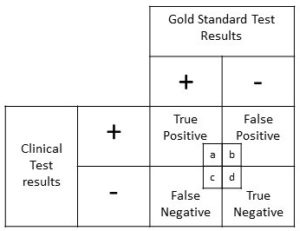The collection and synthesis of clinically relevant data including signs, symptoms, complaints, psychological status and social circumstances help make a formal diagnosis. The challenge is how to make an accurate diagnosis. The likelihood of making an accurate diagnosis increases when a particular sign (or a set of clinical findings) characteristic/typical of a suspected disease is present and when the clinician correctly identifies it/them. In some instances, the absence of a particular sign (or a set of signs) may suggest the presence of the suspected disease.
For example, the presence of radiating pain during SLR, crossed SLR, slump test indicates the presence of lumbar nerve root compression possibly due to disc herniation. Furthermore, the absence of pinprick and light touch sensation over the lateral and dorsal aspect of foot indicate the presence of L4 – S1 nerve root lesion on the ipsilateral side.
On the other hand, the absence of radiating pain during SLR, crossed SLR, slump test does not indicate the absence of lumbar disc herniation. Also, the presence of pinprick and light touch sensation over foot does not indicate the absence of L4 – S1 nerve root lesion.
Some findings are useful to make a diagnosis when present and some signs are useful when they are absent. Therefore, it is important for clinicians to be skilled in identifying the signs and symptoms they’re looking for while assessing their patients and robust in selecting the appropriate diagnostic tests to confirm the diagnosis. This requires a judicious use of both positive and negative findings.
To aid the process of making a clinical diagnosis, a variety of standalone or a cluster of tests including physical examination, imaging, and biochemical tests have been developed over the years. The performance of these diagnostic tests depends on its ability to discriminate between the diseased and healthy state of an individual when compared against a gold standard (i.e. the one that works the best) (Figure 1).

Understanding the principle of making a diagnosis requires an introduction to two skills that all clinicians must have:
1. How to conduct an assessment?
2. How to select a diagnostic test?
The next two articles present how to conduct a clinical assessment and what to look for when selecting a diagnostic test.
Reference:
- Šimundić, A.M., 2009. Measures of diagnostic accuracy: basic definitions. EJIFCC, 19(4), p.203.
- McGee, S., 2012. Evidence-based physical diagnosis. Elsevier Health Sciences.
- Fletcher, R.H., Fletcher, S.W. and Fletcher, G.S., 2012. Clinical epidemiology: the essentials. Lippincott Williams & Wilkins.